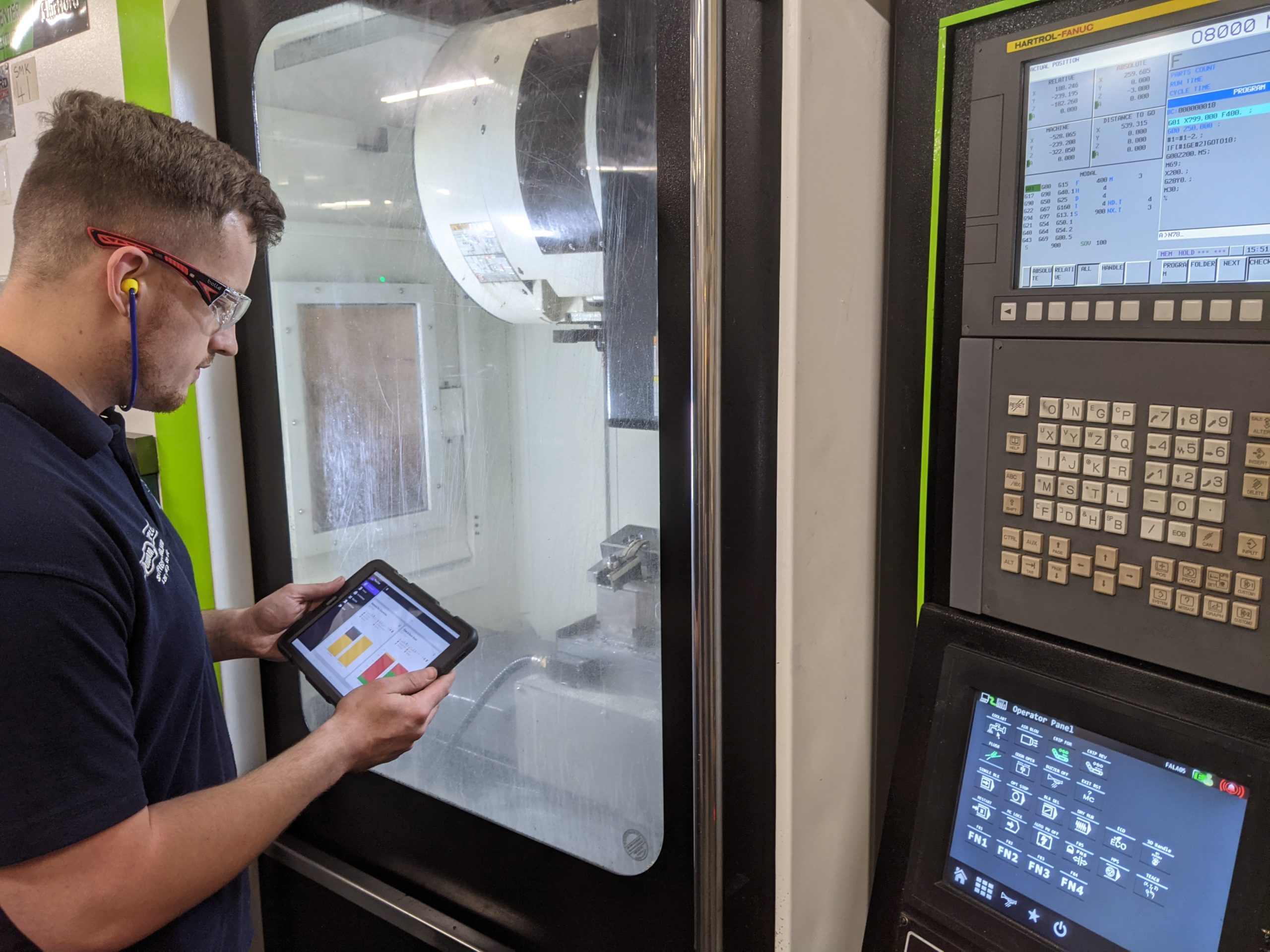
In the September issue of MTD magazine, we interviewed directors from FourJaw Manufacturing Analytics, a tech start-up spun out of the University of Sheffield’s Advanced Manufacturing Research Centre (AMRC). They launched a ‘FitBit’ to unlock and optimise data hidden away in your machine tool. Of course, we didn’t want to just take their word for it….so we spoke to one of the early adopters of the technology from this trailblazing new business.
In September, we spoke at length with FourJaw Manufacturing Analytics Founder and CEO, Chris Iveson and his colleague Robin Hartley. They discussed the challenges of founding a new business and overcoming industry apprehensions of ‘digital transformation’ promises – something created by a multitude of ‘false dawn’s’. Additionally, we discussed the software platform, its capabilities, potential and ease of integration on the shop floor. All sounding a little ‘too good to be true’ we dug a little deeper and spoke with Durham-Duplex, a family-owned Sheffield business that has taken the plunge with FourJaw.
Durham-Duplex has been at the cutting edge of Industrial Blade and Industrial Machine Knife manufacturing for over 110 years; a multi-national business with 110 employees across four operational sites that is proud to be ‘Made In Sheffield’. The company utilises the tacit knowledge and rich history of Sheffield as the world centre of the knife industry to enable them to produce the highest quality cutting edge products for their customers. Using trusted legacy machinery as well as state of the art bespoke machinery, this ISO: 9001 certified company has a focus on development and continuous improvement that is almost as sharp as its products.
The Industrial Blade and Industrial Machine Knife product range encompass the food processing and packaging sector, meat processing, film and foil converting, medical, industrial flooring, plastic processing, retail, recycling and waste management to name a few. Durham-Duplex is also the exclusive UK distributors for a number of the world’s leading brands including OLFA®, GEM®, Endurium® and Personna®.
Discussing how the relationship started with FourJaw, Steve Corbett, Production Director at Durham-Duplex recalls: “I’ve known Chris Iveson for some time having studied with him at the University of Sheffield. I’d seen some prototype software being demonstrated at MACH 2018 and it piqued my interest. I was very interested in the fact that sophisticated monitoring technology can be used on older, simple machinery as well as on the more complex machine tools.”
“I realised quickly that the FourJaw software would be a powerful tool to drive improved utilisation in bottleneck areas and it could deliver improved ROI as well as improved customer experience through reduced lead-times. The automated monitoring software is also a great fit with our vision of a customer-focused, high quality, highly productive manufacturing outfit that maximises our machinery and labour utilisation. So, when Chris finally launched his business, I was happy to discuss the opportunity.”
The Implementation Phase
“We purposefully set off slowly, monitoring just two machines at first. The installation process was simple to implement and it was done quickly. Robin Hartley from FourJaw took good care of everything, keeping us fully informed and up to date. Certain hardware requirements had to be purchased, but this was relatively inexpensive.”
“We then worked with the FourJaw team to develop the outputs from the software to our requirements, developing modules and the KPI’s that we were interested in. A key part of the software is that it collects input from machine operators via tablet computers next to each machine. To reduce the potential for friction, staff were made part of the implementation process right from the start. In most instances, this meant the FourJaw development team were communicating directly with our staff to ensure the software was user friendly and useful to them.”
“Once we had the ‘generic’ outputs we required, such as machine utilisation over different time periods, reasons for machine downtime and times and durations of each production run, we started the process of implementation on another six machines, which consisted of two CNC milling machines, and four machines that we had custom built for our business. All of these machines were previously monitored manually. This onboarding process also ran smoothly, and with the software outputs now fully developed, we were able to have useable data on day one of installation.”
The results
Steve Corbett continues: “The software is a great tool that allows real-time and historical utilisation data capture that can then be used to inform and validate ideas and actions that increase utilisation. For example, we found out that the first hour of the day was lost because the machines had to warm up before they were ready for production. The FourJaw software highlighted this lost hour, so we started warming up our grinding machines an hour before the start of the day shift. We can see on the FourJaw production timeline that this adds an extra hour or more of productive time to each shift. The fact that the software automatically captures data over time and that it generates automatic e-mail notifications means there is no need for what is often costly manual data capture entered into complicated spreadsheets to identify issues. The interface with machine operators and staff are kept simple and time-sensitive to ensure ease of use and ensure the monitoring process is not an onerous one.”
“It is important to note that production teams must actively work with the system to achieve the gains, but the automatic gathering of actionable data hugely simplifies the continuous improvement process.”
As Steve continues: “In the first area identified (our grinding cell) we are now producing up to five times the number of parts with the same production costs. The approach to achieving this was simple. The overall process of focusing the minds of the management and shop-floor on maximising grinding time (value added) cannot be under-estimated. By analysing the times when the machine wasn’t actually grinding steel within the cycle, increasing the speeds and feeds and analysing the ‘reasons for down-time’ we were able to take team based actions to improve outputs. We know exactly how many unutilised hours we have, this allows us to defer further investment in machinery in this area and better measure ROI on any future purchases. The fact that data is captured over time means that gradual, as well as immediate deteriorations in utilisation, can be identified. The software has a ‘reasons for downtime monitor’ where the tablet or computers automatically ask the operator for a downtime reason, once a period of downtime has been detected. This information is captured weekly and identifies any actionable issues to where we can improve utilisation. Any fall in output can be cross checked with utilisation numbers and the reasons for this are contained within the downtime monitor. As a manager, you can quickly see that the process is monitored and issues are actioned. In essence, you know the process is under control.”

